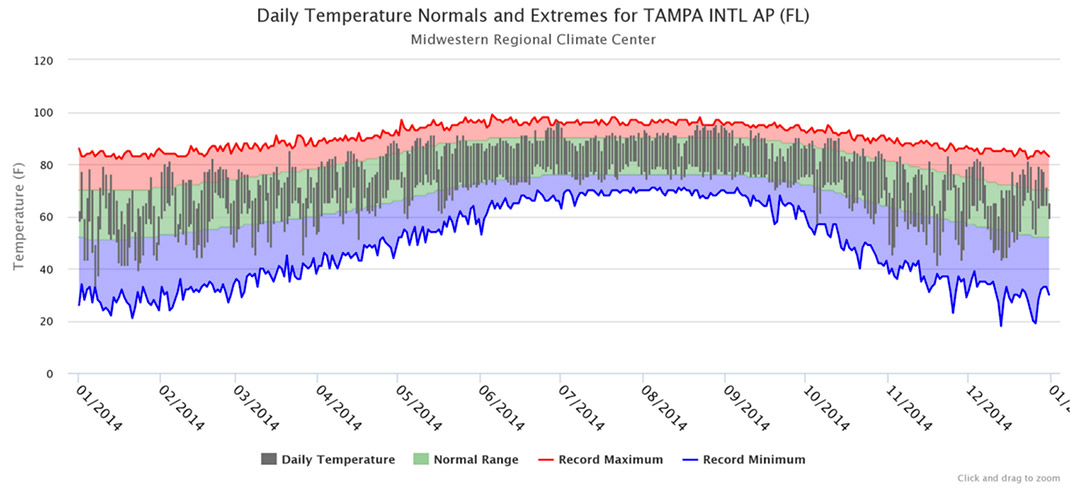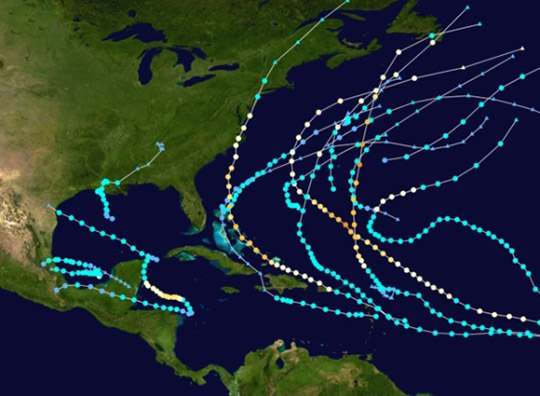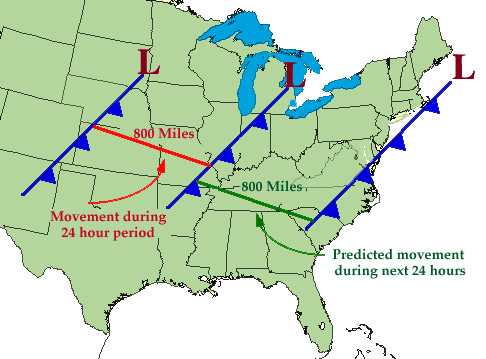Forecast Methods
Forecasters use several different methods to predict future weather. These models depend on the tools available as well as past weather patterns. Let’s take a look at some forecast methods.
Persistence: the simplest form of weather forecasting, works when weather patterns change little from day to day, future weather conditions will be the same as the current weather conditions.

Source: National Weather Service
Climatology: forecasts made based on the climatology, or long-term weather of an area. These forecasts use the average of weather trends for the current period to make generalizations about the weather.

Analogue: one of the oldest method of forecasting, an analog forecast is made by comparing past large-scale weather patterns that resemble the current situation. An example of this is using the tracks of past hurricanes that originated at a common point to forecast the possible track of a new hurricane from that same origination point.

Source: Wikipedia
Trend: This method uses mathematics to determine the speed and direction of the movement of weather features such as fronts, precipitation, and pressure systems. This method allows for relatively accurate predictions, however any changes in the atmosphere will impact the observed weather.

Source: Weather World 2010